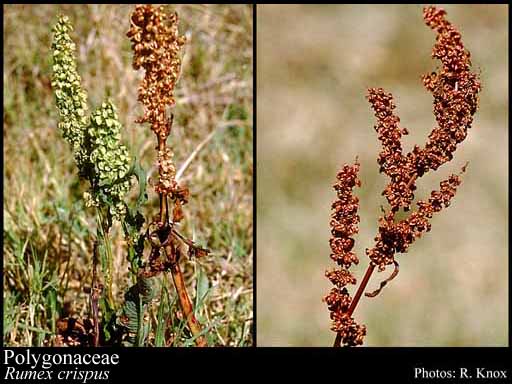- Reference
- Gen.Pl. [Jussieu] 82 (1789)
- Name Status
- Current







Scientific Description
Common name. Milkweed Family.
Habit and leaf form. Herbs (commonly), or herbaceous climbers, or trees, or shrubs, or lianas. ‘Normal’ plants, or switch-plants; sometimes with the principal photosynthesizing function transferred to stems. Leaves well developed (usually), or much reduced. Plants with a basal concentration of leaves (often), or with neither basal nor terminal concentrations of leaves. Self supporting, or climbing; when climbing, stem twiners, or tendril climbers. Polygonum twining clockwise. Helophytic, or mesophytic, or xerophytic. Leaves minute to large; alternate (nearly always), or opposite (Pterostegia); usually spiral; ‘herbaceous’, or membranous (when reduced); petiolate, or subsessile; sheathing. Leaf sheaths not tubular; with free margins. Leaves gland-dotted, or not gland-dotted; simple; sometimes almost peltate, or not peltate; epulvinate. Leaf blades entire; pinnately veined; cross-venulate; auriculate at the base, or cordate, or hastate, or sagittate, or attenuate at the base, or cuneate at the base, or rounded at the base. Leaves with stipules (usually), or without stipules (Eriogoneae). Stipules intrapetiolar; concrescent; ochreate; scaly. Leaf blade margins entire (or crisped), or crenate; revolute (when young). Leaves without a persistent basal meristem. Stem anatomy. Nodes penta-lacunar to multilacunar. Secondary thickening absent, or developing from a conventional cambial ring, or anomalous; when anomalous, via concentric cambia.
Reproductive type, pollination. Fertile flowers hermaphrodite, or functionally male and functionally female, or functionally male, or functionally female, or hermaphrodite, functionally male, and functionally female. Unisexual flowers present, or absent (usually). Plants hermaphrodite (usually), or monoecious, or polygamomonoecious, or dioecious. Anemophilous, or entomophilous.
Inflorescence and flower features. Flowers solitary (axillary), or aggregated in ‘inflorescences’; often in fascicles. The terminal inflorescence unit cymose (the main branching usually racemose). Inflorescences terminal, or axillary; racemes, corymbs, spikes and heads; with involucral bracts, or without involucral bracts; often conspicuously ochreolate. Flowers small; regular; 2 merous, or 3 merous, or 5 merous; cyclic to partially acyclic. When partially acyclic, the perianth acyclic and the androecium acyclic. Free hypanthium present, or absent. Hypogynous disk present (or nectaries present between the androecial members); annular. Perianth ambiguously with distinct calyx and corolla, or sepaline, or petaline; 2–6; 1 -whorled, or 2 -whorled (or spiralled); free to joined; when biseriate, similar in the two whorls, or different in the two whorls; fleshy (sometimes), or non-fleshy; persistent; accrescent (often), or non-accrescent. Fertile stamens present, or absent (female flowers). Androecium (2–)6(–9). Androecial members branched (e.g. Rheum), or unbranched; free of the perianth, or adnate (usually more or less perigynous); all equal, or markedly unequal; free of one another, or coherent (sometimes filaments basally connate); when cyclic, 2 -whorled (3+3, or spiralled). Androecium exclusively of fertile stamens. Stamens (2–)6(–9); alternisepalous, or oppositisepalous. Anthers dorsifixed, or basifixed; versatile, or non-versatile; dehiscing via longitudinal slits; introrse, or extrorse and introrse, or latrorse; tetrasporangiate. Fertile gynoecium present, or absent (male flowers). Gynoecium (2–)3(–4) carpelled. The pistil 1 celled (usually), or 3 celled. Carpels isomerous with the perianth (when P cyclic). Gynoecium syncarpous; synovarious to synstylovarious; superior. Ovary unilocular; 1 locular. Locules secondarily divided by ‘false septa’ (rarely incompletely trilocular by false septa), or without ‘false septa’. The ‘odd’ carpel posterior. Gynoecium stylate (sometimes only shortly). Styles (2–)3(–4); free to partially joined; apical. Stigmas (2–)3(–4); dry type; papillate, or non-papillate; Group II type. Placentation basal. Ovules in the single cavity 1; funicled, or sessile; ascending; non-arillate; orthotropous to anatropous.
Fruit and seed features. Fruit non-fleshy; indehiscent; a nut (usually, usually trigonous or two-sided), or achene-like; enclosed in the fleshy hypanthium, or enclosed in the fleshy perianth, or without fleshy investment; 1 seeded. Seeds endospermic. Endosperm ruminate (Coccoloba), or not ruminate; oily. Perisperm present to absent (‘more or less absent’). Seeds with starch. Cotyledons 2. Embryo achlorophyllous (5/14); straight to curved. Seedling. Germination phanerocotylar.
Physiology, biochemistry. Aluminium accumulation not found. Plants accumulating free oxalates. Photosynthetic pathway: C3 and C4.
Geography, cytology, number of species. World distribution: widespread, but absent from Africa, tropical South America, West Indies, and Southeast Asia except New Guinea. X = 7–13. 800 species.
Economic uses, etc. Foodstuffs from Fagopyrum (buckwheat) and Rheum (rhubarb); many noxious weeds, and some ornamentals.